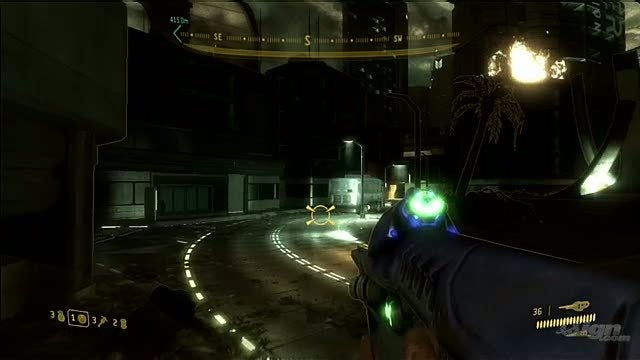
Genre: First Person Shooter
Year: 2009
Developed by: Bungie
Published by: Microsoft Game Studios
Platforms: XBOX 360
#180
Feeling Like: You can’t take the sky from me
It just rained for the first time in months, breaking the recent heat wave we’ve had in Victoria, BC. For once, others shared my love for overcast skies, gray days and a cool temperature. Writing this entry could not have come at a better time.
I admire games that don’t overstay their welcome. Most of the time, they know exactly what they are and it’s usually not an epic spanning dozens or even hundreds of hours of gameplay. It’s a singular, quiet story that focuses on a few relationships. Though small in budget, they can still feel big if the developers get the story, characters and setting right.
Halo 3: ODST gets everything right, for what it’s going for. It’s a spin-off, a smaller package, a more compact Halo. A younger sibling, or distant cousin that you don’t think about that often, but they sure do have a lot to say.

The atmosphere here is effective, a drastic change from the planet-spanning destruction of previous Halo games. You don’t play as Master Chief here, you’re a rookie in a small team that’s charged with rescuing innocents and controlling checkpoints among empty streets, desperate allies and a soundtrack that is both compelling and sorrowful.
Deference for Darkness immediately sets the mood. If this doesn’t make you want to stare out the window at the rain with a cup of tea, we’re not made of the same stuff. Bungie knew it had to do something slightly different to both entice players, but not overshadow the mainline entries. What a tricky line to walk.
I also adored the marketing. This commercial, and the accompanying song, is fantastic. I’m always a fan when video games incorporate real-life acting or scenarios. It’s just so strange and shouldn’t work, but for me it almost always does. Chrono Cross and Enslaved: Odyssey to the West did it sparingly, and effectively. This commercial isn’t in the game itself, but it sets the tone amazingly well. Your fellow comrades will die in this space war. It will be intense. You don’t have the powers of Master Chief, you’re just a rookie soldier. The haunting voice is ethereal, the pounding drums relentless. You can’t get away from the action and you can’t take your eyes away from the screen. You’re ready to run through a wall before you even press the Start button.

As if I needed another reason to love this game, it’s stacked with an all-star cast of voice actors. Tricia Helfer, David Scully, Nolan North, Debra Wilson to start, and then you get a Firefly mini-reunion of Nathan Fillion, Adam Baldwin and Alan Tudyk. I am a massive Firefly fan to the point where I re-watch the entire show (which, sadly, doesn’t take long) once every few years. To hear Mal, Wash and Jayne quip and shoot their way through trouble once again brought a massive smile to my face.
On top of the already stellar, tightly-knit campaign, there was Firefight, a multiplayer horde mode that caught the attention of Halo fans everywhere. Except me, I never tried. Thankfully, Mitch did!
(Mitch)
In the glory days of the Xbox 360, the Horde Mode was fairly ubiquitous, having been introduced into the public awareness by Gears of War 2.
Halo 3: ODST put a Bungie spin to a familiar concept with Firefight, placing you and up to three friends in arenas based on locations from the campaign. In a typical game of Firefight, you would face down escalating waves of enemies in a round (three rounds per set) and each success would introduce difficulty multipliers via the Skulls; a concept that Halo veterans would recognize with each Skull bringing in its own twist like stamina only recovering on melee instead of passively, or enemies throwing significantly more grenades and being better at dodging yours.

Firefight brought the fun of campaign co-op but with the tension of winning hard-fought battles by the skin of your teeth, success metered by the knowledge that the subsequent waves would only get harder. A pool of lives were also shared between all players, putting a lot of pressure on you to not be the one throwing those precious revives away.
The maps offered a variety of environments, from the tight corridors of Alpha Site to the open savannah and vehicle madness of Lost Platoon. Firefight proved to be addictive, adding great replayability to a game with a short campaign and no player versus player mode of its own, instead just using Halo 3’s still very lively matchmaking.
I would frequently stay up until the wee hours of the morning with random groups I’d met on Internet forums, challenging ourselves to get as far as we could, sometimes barely being able to keep my eyes open but always trying to go one more round. With Halo 3: ODST being available on the Master Chief Collection with new updates, there’s never been a better time to give this mode a try if you missed it the first time around.
(Mitch’s writeup finished)
Cor blimey! What a game. And to think I never even tried Firefight or co-operative play in the campaign. Who knows how high Halo 3: ODST would be if I had?